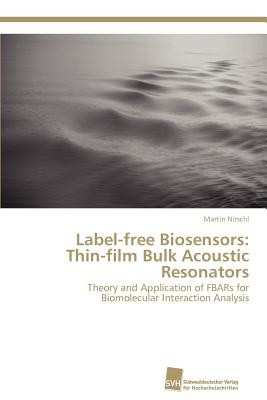
- We will send in 10–14 business days.
- Author: Nirschl Martin
- Publisher: Sudwestdeutscher Verlag Fur Hochschulschriften AG
- Year: 2012
- Pages: 156
- ISBN-10: 3838131657
- ISBN-13: 9783838131658
- Format: 15.2 x 22.9 x 0.9 cm, minkšti viršeliai
- Language: English
- SAVE -10% with code: EXTRA
Reviews
Description
Thin-film bulk acoustic resonators are microfabricated devices which can detect mass changes on their surface with high sensivity. With a specific functionalisation immobilised on the suface, the FBARs can be used as biosensors. Resulting from their small size they show highly interesting properties such as low liquid consumption, the large number of resonators that can be used in parallel, the high measurement speed and the possibility of detecting conformational changes of biomolecules such as proteins. With these features, it seems to be likely that there are applications for which the FBAR is superior to the other established technologies. One of these applications is the analysis of biomolecular interactions. This book gives a summary of the measurement technogies commercially used for label-free biomolecular interaction analysis and presents the advantages and disadvantages of the FBAR in theory and application.
EXTRA 10 % discount with code: EXTRA
The promotion ends in 21d.06:46:40
The discount code is valid when purchasing from 10 €. Discounts do not stack.
- Author: Nirschl Martin
- Publisher: Sudwestdeutscher Verlag Fur Hochschulschriften AG
- Year: 2012
- Pages: 156
- ISBN-10: 3838131657
- ISBN-13: 9783838131658
- Format: 15.2 x 22.9 x 0.9 cm, minkšti viršeliai
- Language: English English
Thin-film bulk acoustic resonators are microfabricated devices which can detect mass changes on their surface with high sensivity. With a specific functionalisation immobilised on the suface, the FBARs can be used as biosensors. Resulting from their small size they show highly interesting properties such as low liquid consumption, the large number of resonators that can be used in parallel, the high measurement speed and the possibility of detecting conformational changes of biomolecules such as proteins. With these features, it seems to be likely that there are applications for which the FBAR is superior to the other established technologies. One of these applications is the analysis of biomolecular interactions. This book gives a summary of the measurement technogies commercially used for label-free biomolecular interaction analysis and presents the advantages and disadvantages of the FBAR in theory and application.


Reviews